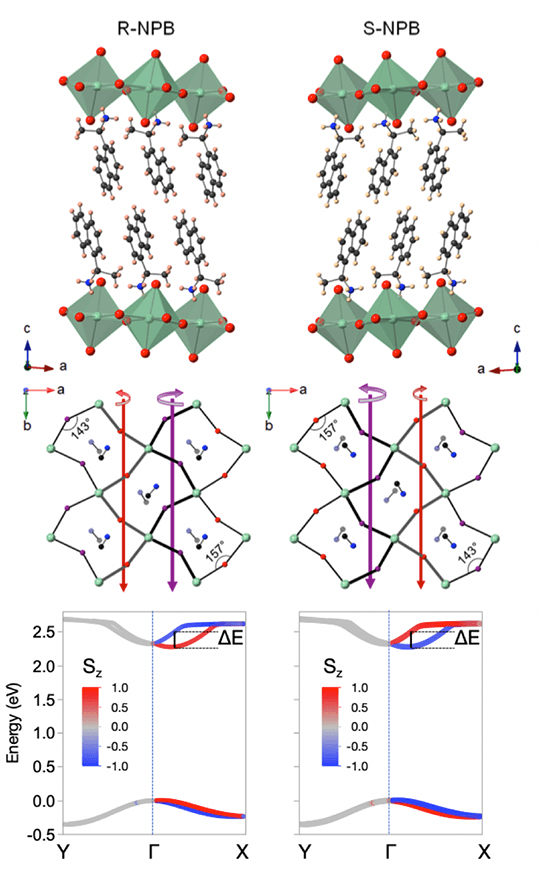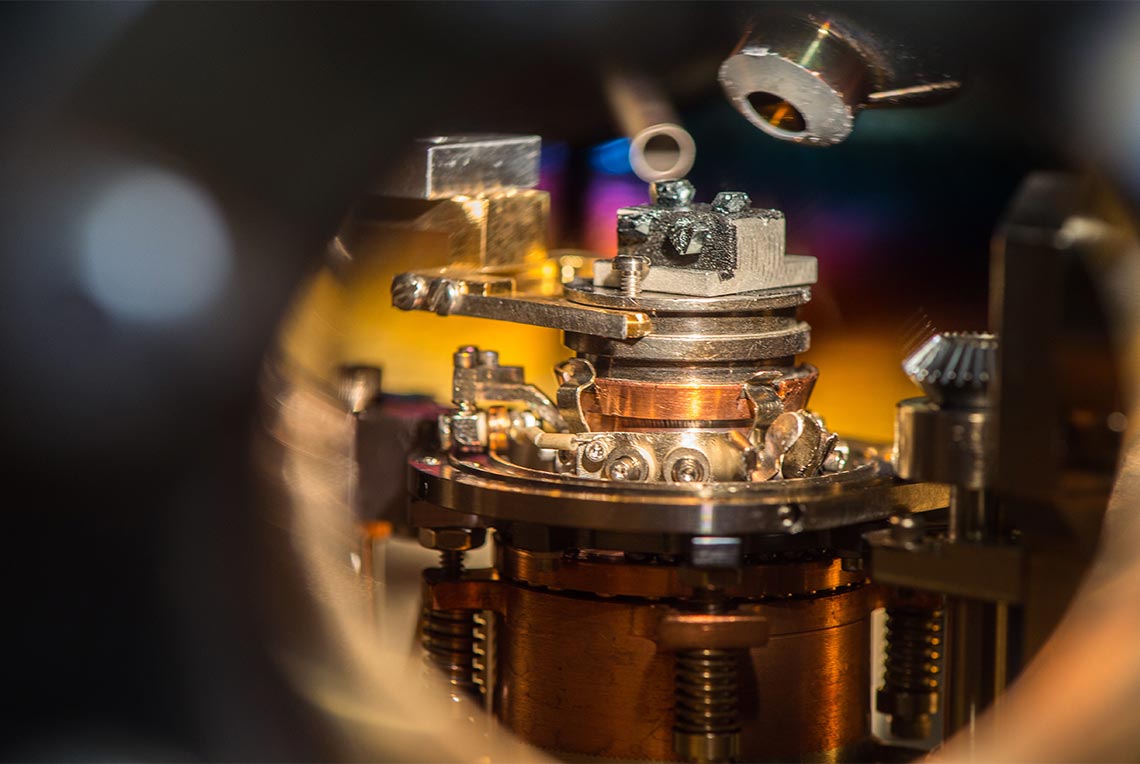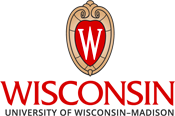Organic-to-Inorganic Structural Chirality Transfer and Impact on Rashba-Dresselhaus Spin-Splitting in 2D Perovskites
Sept. 17, 2020
The ability to break structural symmetry using chirality transfer from one structural unit to another provides a synthetic design paradigm for emergent properties, including spin-polarization for hybrid perovskite spintronics and related applications.
Scientific Achievement
We demonstrate a structural chirality transfer from chiral spacer cations to the perovskite layers leading to Rashba-Dresselhaus (RD) spin-splitting of electronic states in 2D hybrid perovskites.
Significance and Impact
This work demonstrates a pathway for rational control of chirality and spin-related properties of the inorganic framework for potential applications in hybrid perovskite spintronics.
Research Details
- Characterized the single-crystal structures of new 2D lead bromide perovskites (NPB) incorporating chiral R- and S-naphthyl-based cations (top panels).
- Elucidated the perovskite layer asymmetry and opposite handedness in R- and S-NPB in terms of disparate in-plane Pb-Br-Pb bond angles and the net helicity of in-plane Pb-Br-Pb bonds (middle panels shown in figure).
- Established through density-functional theory (DFT) calculations a substantial bulk RD spin splitting in perovskite-derived frontier conduction bands with opposite spin polarization in R- vs. S-NPB (bottom panels shown in figure).
Related People
Zeev Valy Vardeny
University of Utah
Volker Blum
Duke University
David Mitzi
Duke University

(DFT+HSE06)









